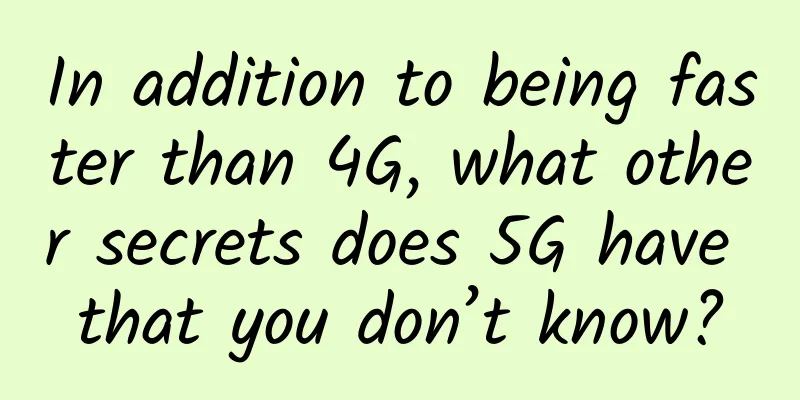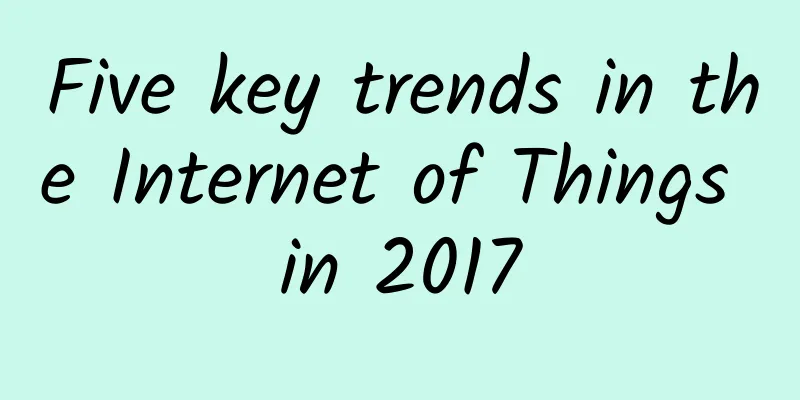In addition to being faster than 4G, what other secrets does 5G have that you don’t know?

|
With 2020 behind us and looking ahead to 2021, we hope that the new normal is a path with fewer unknowns than the past 12 months. In fact, we hope that the unknowns ahead are positive for both our home and work lives. For most of us, advances in cell phones, the internet, and technology continue to be positive and generally continue to grow. As such, the new “buzzword” in the world of cellular networks and the Internet of Things (IoT) in 2020 is 5G. This evolution from 4G LTE should not come as a surprise, as we have been in a world of cell phone evolution since the first generation of analog cell phone technology was introduced in the mid-1980s. Roughly every 10 years, there has been a new “G” generation of cellular technology. People have come to expect it. What is unknown or expected is what the new technology will bring and what it will mean for entire industries and the population as a whole. Of course, many of the benefits of new technology can only be realized when paired with new applications and use cases. So, you might say, 5G connections are faster, so what? But it's much more than that; in fact, consumer cell phone data speeds are just the tip of the iceberg. What lies below is an amazingly complex set of network elements that are designed to produce unprecedented connectivity.
URLLC and mMTCTwo other groundbreaking technological advances come from 5G connectivity, which will complement speed and provide the ability to launch applications and use cases that were not possible before. These are Ultra-Reliable Low Latency Communications (URLLC) and Massive Machine Type Communications (mMTC). In fact, back in May 2019, Forbes Magazine published an article about 5G titled "Why 5G Is More Than Just Faster 4G." In the article, Simon Rockman, a former contributor to Forbes Consumer Tech, discussed the three main factors that will drive 5G beyond anything we have ever seen. To fully grasp these concepts, a basic understanding of what is happening in the background is required. It's technical; however, real-world examples are not. Yes, 5G has faster connections. It's much faster. It's called eMBB (enhanced mobile broadband or extreme mobile broadband). It's very advanced engineering built around three intertwined components: antennas, base station radios, and software. MIMOBy incorporating a large number of grouped antennas in a device (and the corresponding base station), multiple paths for data flow can be created, which are then combined to form an information superhighway. This is called massive MIMO (multiple-in, multiple-out) and sets the stage for very high throughput. Before MIMO technology, if a device received multiple signals from a tower, it would be seen as interference, which would have the opposite effect (called multipath propagation) and would severely reduce data throughput. By fusing advanced antenna technology and highly computed signal processing, what was once considered "radio noise" is now used as an accelerator to give us 5G speeds. These massive MIMO antenna arrays, combined with advanced radio technologies such as spectrum sharing, unlicensed Wi-Fi assistance, and specialized channel coding software, provide eMBB with the capabilities users need to meet demand for streaming HD/4K video, mobile virtual reality (VR) headsets, and high-volume IoT data streams for industry verticals such as telemedicine. Interestingly, the components that make up 4G LTE’s potential 50-100 times faster speeds also have a big impact on something else: latency. DelayTo intuitively understand what latency is, we need to understand how it relates to speed. If we compare speed to how fast a car travels, then latency is “0-60.” It represents the time or delay it takes for bits and bytes to arrive. Reducing latency (lowering latency) allows for new applications and technologies that were never possible before. For example, a self-driving car can sense its surroundings and operate without human involvement. In order for a car to safely navigate the road with other vehicles, pedestrians, and traffic lights, it needs to interact with the environment around it. This requires them to be connected in some way, such as through a cellular network. Before 5G connectivity brought extremely low latency, the delays in cellular networks were too great for these vehicles to react quickly enough to create a safe environment. Any delay in this interaction can have devastating effects. With 5G, low latency plays a major role in vehicles communicating quickly with everything around them and safely providing the appropriate response. This is called Vehicle to Everything (V2X) communication and will play a huge role not only in self-driving cars, but also in delivery trucks, rail/ship/air transportation, or any machine operating in other environments. The University of Bristol organised a fascinating demonstration of the low latency properties of 5G. Titled Orchestral Music, violinist Anneka Sutcliffe played in Bristol, Professor Mischa Dohler played at the piano in London's Guildhall, and singer Noa Dohler and violinist Rita Fernandes performed at their remote location over a 5G network at Digital Catapult in London Euston. Synchronising the musicians over a mobile cellular connection is extremely demanding as the human ear is very good at perceiving even the slightest delay. Yet, when they rehearsed the piece, the two violins sounded like one. The audience's experience was as if the musicians were performing in the same venue. scaleThe last (but certainly not the least) of 5G's three major breakthrough advances is its focus on the massive scale of machines connected to the Internet. 5G networks are capable of connecting millions of IoT devices in a small, focused area, a capability known as massive machine type communication (mMTC). The 5G specification calls for mMTC to require 1 million connections per square kilometer. This capability, far exceeding the capacity of 4G, will allow for the massive operation, monitoring, and control of many types of small sensor devices. A good example is the automotive industry connecting assembly robots and the many sensors they contain to a central “condition monitoring” software within the factory. Condition monitoring refers to the supervision of these robots and their internal working conditions (factory status) to prevent unplanned defects. Recording condition characteristics along the production process enables continuous quality control of the product. The hundreds of wireless sensor nodes embedded in these machines (e.g., cameras, sound detection, proximity sensors, temperature sensors) are connected wirelessly via the 5G network. Without this wireless network, these machines would be constrained by wired network connections and limit where they can be placed on the factory floor. This means that production setups can be easily changed and units moved around to maximize factory efficiency. In summary, the most obvious and easily demonstrated advantage of 5G connectivity is the incredible download speeds. But when we dig deeper, we find that there is more to this evolution. In fact, those in the industry who are taking advantage of 5G wireless networks are just now realizing that when you combine speed, reliability and scale to an unprecedented degree, you find a vast, wide-ranging (and some as-yet undiscovered) array of opportunities. |
<<: The Basics: What are edge devices?
>>: DataView standardizes indicator management to help enterprises quickly formulate SLOs
Recommend
HostDare: 25% off NVMe VPS in Los Angeles starting at $19.5/year
I received the latest promotional email from Host...
Advantages of Web 3.0 in Business Models
Web 3.0 is the upcoming third generation of the i...
Why do you need to ask someone to deploy WiFi at home? You can do it yourself
WiFi has become a necessity in life, and I believ...
The shortest path to microservice containerization, best practices for microservices on C
Preface Microservices, as a more flexible, reliab...
When the 2G/3G network is down, will your IoT work properly?
Over the past few years, we’ve seen a lot of head...
The arrival of 5G will trigger a larger-scale patent war, and the market size is expected to grow 120 times
Automakers are battling in court with Qualcomm, N...
For 5G: China Mobile, China Unicom and China Telecom are accelerating the withdrawal of 2G/3G networks!
[[360018]] Compared with China Mobile, China Tele...
Where does the power of high-performance 5G core network come from?
The core network is the brain of the entire commu...
Two ways of TCP retransmission
There is no communication without errors. This se...
Is it true or false that 5G brings new business opportunities?
5G is a very popular buzzword recently. According...
What secrets do you not know about the spanning tree protocol?
1. Spanning Tree Protocol (STP) Compaq was long a...
What are the advantages of Wi-Fi HaLow? Why is it the future of IoT Wi-Fi?
Connectivity is critical to every aspect of our l...
Why is 5G suddenly not popular anymore?
In the past two days, an article about the curren...
What are the remaining obstacles to China's 5G?
With the news that Nokia and Ericsson won the bid...
5G will explode with AI, cloud, and edge computing
The 5G era has arrived, and all walks of life are...









